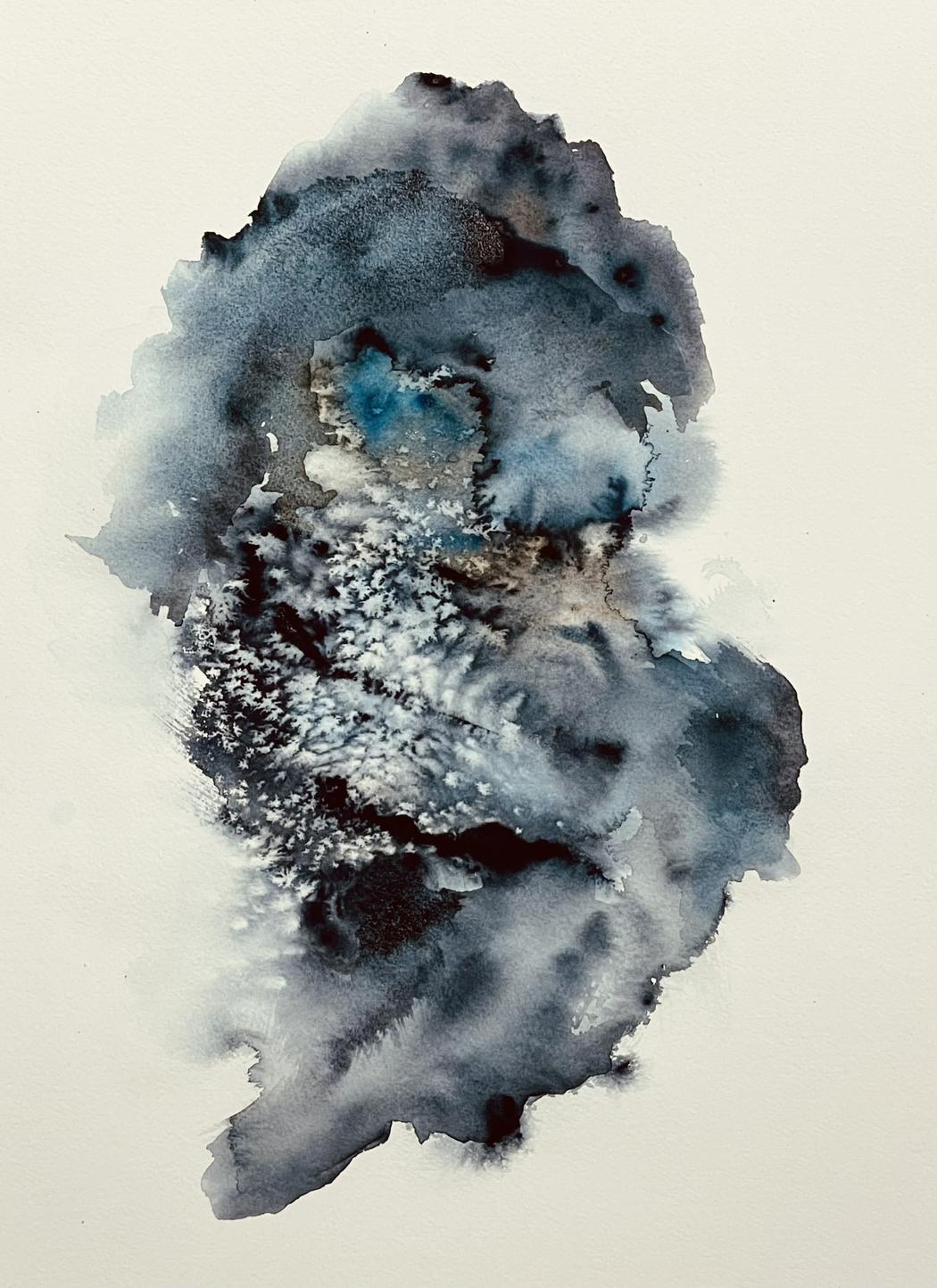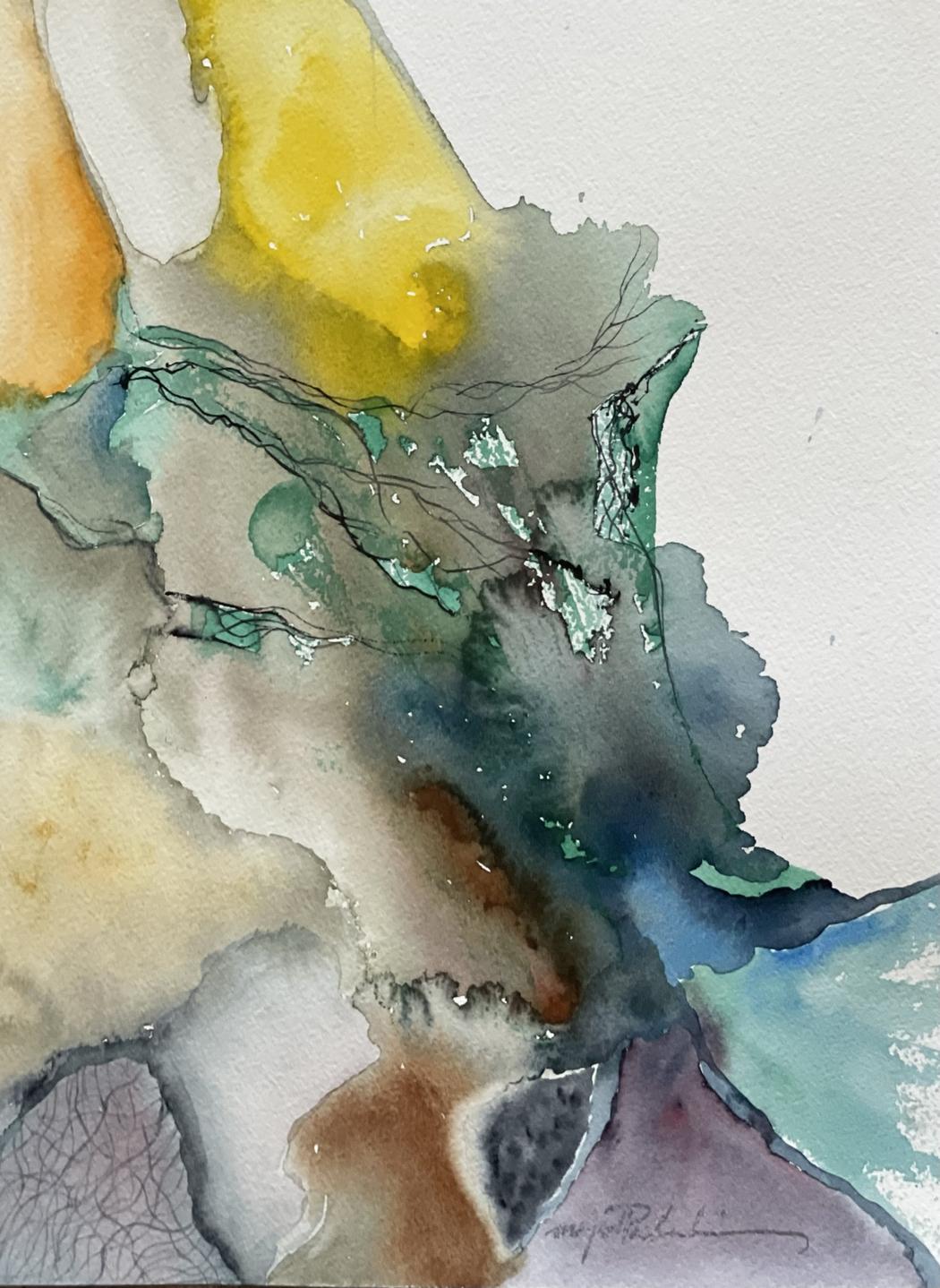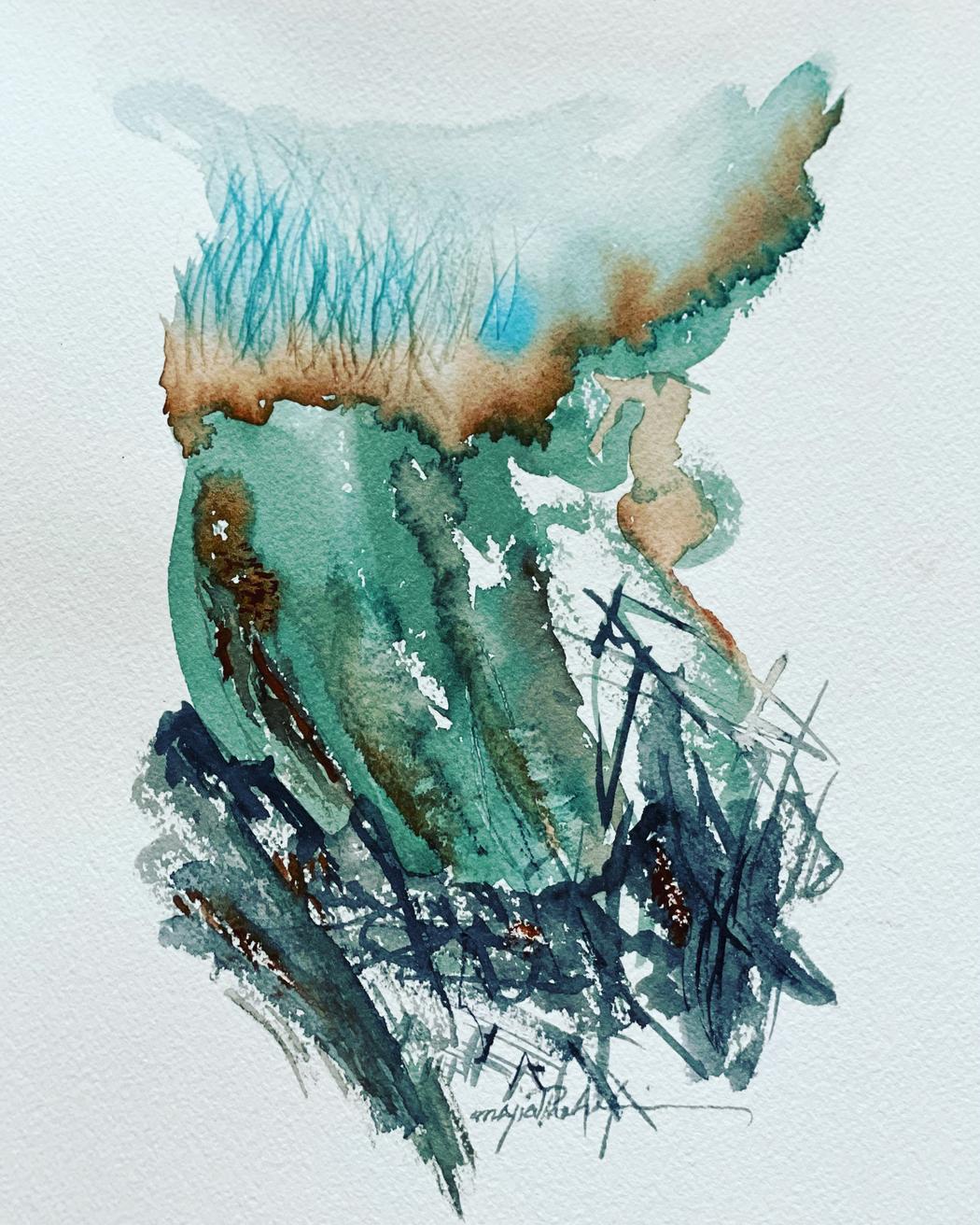Majid Pazhuhi
Your background in architecture clearly informs your artistic work. How does your training as an architect influence your approach to watercolor?
My background in architecture has shaped the way I see balance, proportion, and rhythm—but when I paint in watercolor, I let go of structure in the traditional sense. Watercolor invites surrender. It reveals how to trust movement, chance, and the natural flow of the medium itself. Unlike architecture, where precision is essential, painting allows for uncertainty and imperfection. I still carry with me an instinct for composition, but I let intuition lead. I respond to the way water pools, how pigment settles, how light filters through each layer. Watercolor allows me to work with light and atmosphere in a way that echoes architectural form—only here, the materials are translucency, gravity, and time.
You work across a wide range of media—from watercolor and acrylic to sculpture. How do you choose which medium to use for a particular idea or project?
The idea chooses the medium. Some concepts ask for the immediacy and vulnerability of watercolor; others need the physical presence of sculpture or the layering of acrylic. I think of each medium as a different language—what I want to express determines the dialect. Watercolor speaks in breath and silence; sculpture in weight and void. Each medium gives shape to a different kind of energy.

You mention poetry and the human experience as inspirations. Are there specific poets, verses, or experiences that directly influence your visual work?
Yes—poetry is a quiet force in my practice.The words of Iranian poets such as Rumi, Hafez, Sohrab Sepehri, and Sayeh continue to echo through my creative process, not as direct references, but as quiet undercurrents of feeling, rhythm, and metaphor Their imagery—often grounded in nature and the ineffable—resonates with how I experience the world. I’m also inspired by moments that defy linear narrative: the curve of a gesture, the hush before a storm, the ache of memory. These lived fragments find their way into the work not as literal illustrations, but as emotional textures.
How do you balance the precision required in architecture with the spontaneity of watercolor painting?
That tension is exactly where I like to be. In architecture, every line must serve a purpose; in watercolor, I allow space for the unexpected. But the balance comes from the way I let both disciplines inform each other. Watercolor teaches me to embrace unpredictability—something architecture often resists. Meanwhile, architecture grounds my painting practice, giving it a sense of rhythm and containment. I see it not as contradiction, but as dialogue.
What role does memory play in your creative process?
Memory is central to my work. It’s not about specific recollections, but more the emotional residue they leave behind. I’m interested in how memory distorts, dissolves, or sharpens over time. In my watercolors, this manifests as blurred edges, soft gradients, or layered opacity. It’s a way of visualizing what’s half-remembered—more felt than seen. Each piece becomes a vessel for something unspoken, yet deeply familiar.

As someone living between cultures, does your Iranian-Canadian identity shape the themes or imagery in your work?
I often find myself drawing from the richness of Iranian culture—its intricate architecture, the deep emotional resonance of our poetry, and the layered beauty of artistry. I’m deeply inspired by the use of color, texture, and symbolism that defines so much of Persian visual tradition. At the same time, living in a multicultural country has widened my lens. The experience of moving between languages, aesthetics, and ways of being has shaped how I see and what I notice. It’s not about blending cultures, but about a kind of fluid borrowing—an openness to influence that arises from being immersed in many worlds at once. That space between belonging and becoming is often where the work begins.
Can you tell us more about the relationship between form and emotion in your art?
Form is the architecture of emotion. In my work, form doesn’t represent—it evokes. I’m less interested in depicting reality than in creating spaces for feeling. Every gesture, stain, or texture carries emotional weight. The viewer might not know what they’re looking at, but they’ll feel something—uncertainty, stillness, tension, release. That’s where the work lives: in that emotional recognition, beyond language.


Leave a Reply